![]()
![]()
![]()
Use LEFT and RIGHT arrow keys to navigate between flashcards;
Use UP and DOWN arrow keys to flip the card;
H to show hint;
A reads text to speech;
20 Cards in this Set
- Front
- Back
|
Lipids
|
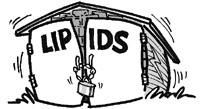
Fatty acids that provide:
Energy storage. Insulation/padding to vital organs. Structural component of cell membranes (phospholipids). |
|
|
Phospholipids
|

Structural component of cell membranes.
|
|
|
Saturated Fats
|
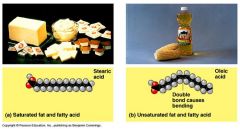
Animal fats that harden at room temperature.
|
|
|
Unsaturated Fats
|
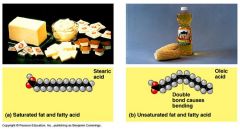
Plant fats/oils that remain liquid at room temp.
Limited ability to pack together tightly. |
|
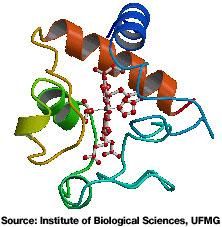
Proteins
|

Toolbox of cell.
Structural components of cells & organisms (skin, hair, muscles). Messengers & Receptors. Defense against disease. Transport, such as Hemoglobin. Enzymes. |
|
|
Enzymes
|
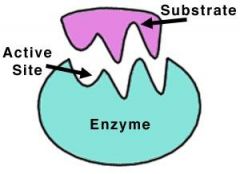
Proteins that assist in chemical reactions in cells.
Work with ‘lock-n-key’ fit. Substrate binds with enzyme at active site. Binding reorients chemical bonds, increases rate of substrates breaking down or rate of creating new molecules. |
|
|
Nucleic Acids
|
Info machine of cell.
Source of genetic info in chromosomes. Molecules that dictate amino acid sequence in proteins. |
|
|
Nucleotides
|
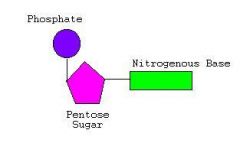
Building blocks of Nucleic acids:
1. 5-carbon sugar (deoxyribose or ribose) 2. Nitrogenous base. 3. Phosphate group. |
|
|
Deoxyribonucleic acid forms genes.
Stores info in codes 3 nucleotides long: triplet codons. Code for amino acids. |
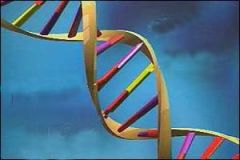
DNA
|
|
|
Triplet Codons
|

In DNA, codes 3 nucleotides long.
CGA=glycine. |
|
|
DNA Function
|
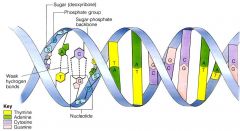
Code proteins in AA sequence.
Shape determines function. Perfom most chemical reactions that keep cells alive. |
|
|
RNA
|
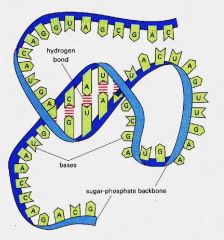
Ribonucleic acid helps control of cellular chemical activities.
Uracil replaces Thymine. Ribose replaces deoxyribose. |
|
|
Prokaryote
|
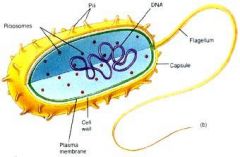
Don’t have a nucleus.
Don’t have membrain-bound organelles. |
|
|
Eukaryote
|
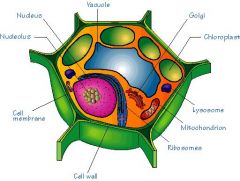
More complex.
Have nucleus. Plant & animal cells. |
|
|
Unicellular organisms
|
Amoeba, Euglena.
|
|
|
Cell Theory Part I
|
Cells or products made by cells are units of structure & function in organisms.
|
|
|
Cell Theory Part II
|
All cells come from pre-existing cells. Life begets life.
|
|
|
Cells in Humans
|
Humans made of trillions of cells.
Vary in size white blood cell (um) to nerve cell (cm) |
|
|
Bacteria’ (a prokaryote) Parts
|
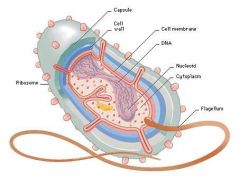
Flagellum, Cell Wall, Plasma membrane, Nucleoid, Ribosomes.
|
|
|
Animal cell’s (a eukaryote) parts
|
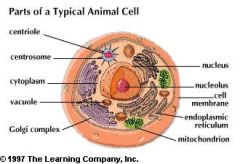
Plasma membrane, Microvillus, Microfilament, Smooth endoplasmic reticulum, Mitochondrion, Rough endoplasmic reticulum, Golgi apparatus, Lyosome, Robosomes, Centriole, Nucleus.
|

